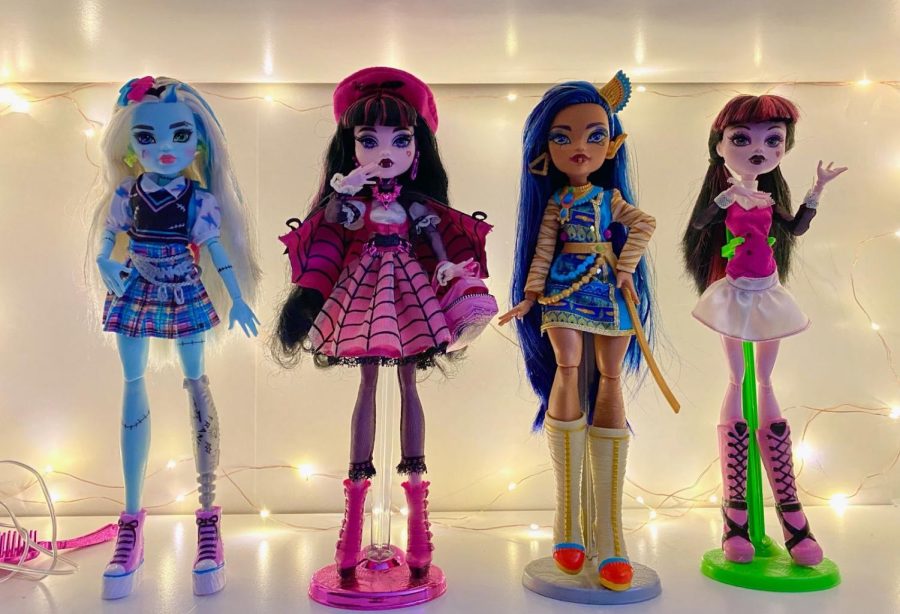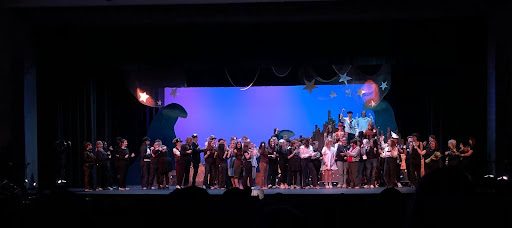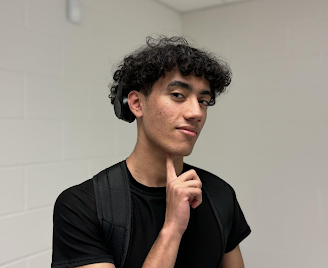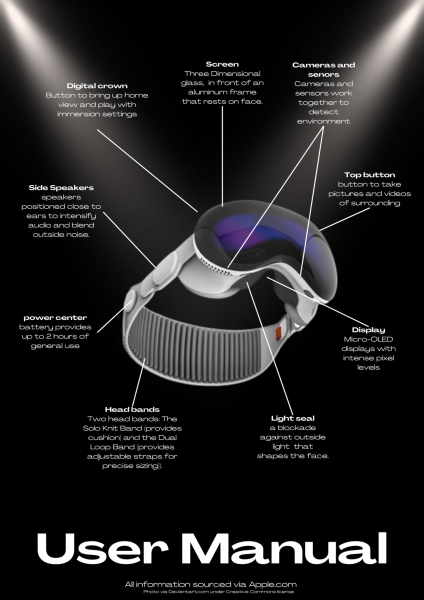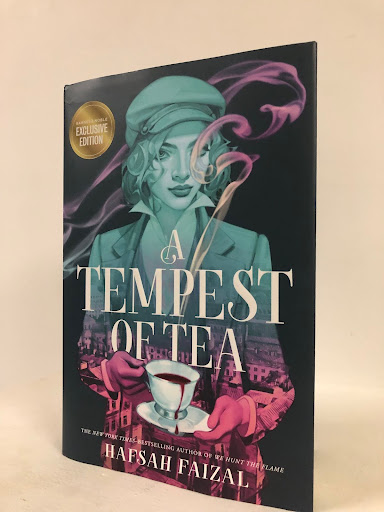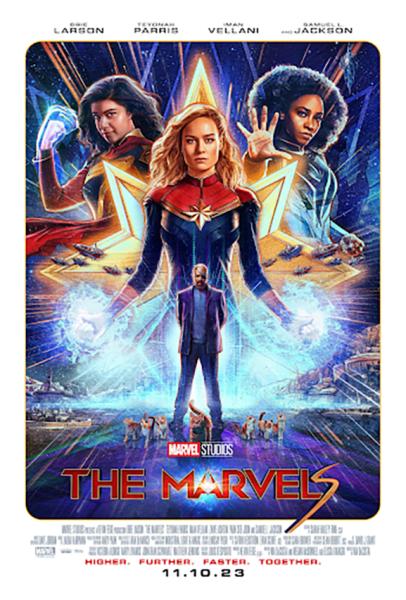Monster High’s representation takes one step forward and two steps back
Photo courtesy of Quinn McCurdy
From left to right: generation three Frankie Stein, Haunt Couture collector’s Draculaura, generation three Cleo de Nile, and generation one Creeproductions Draculaura. Frankie and Cleo have different body molds from earlier dolls, with Frankie getting a taller doll and Cleo getting a curvier body type. Mattel made the decision to change the body types of their dolls in hopes of representing and appealing to a wider audience.
Monster High returns to screens and stores with its third iteration, over a decade after the brand’s initial launch. Fans have mixed feelings about changes to the franchise, particularly regarding its representation.
The brand has been praised for its addition of different body types, family structures, races, and gender identities in its latest generation, which are meaningful changes for many.
“Frankie [Stein] being nonbinary means a lot to me as a nonbinary person because they symbolize the growing acceptance of nonbinary people,” said junior Moth Asfahani. “The growing number of nonbinary characters in media, including Frankie, help expose cis people to that concept and make it easier for me to live as myself.”
Unfortunately, not all changes to the characters have been as positive. One unpopular change is that the zombie students are no longer readable as nonverbal.
“In the original movies, [zombie Ghoulia Yelps] was an advocate for zombies because they were not seen as [being] as smart as other monsters because they didn’t talk [like the other monsters. Ghoulia] was one of the smartest students at Monster High despite stereotypes about her and other zombies, and I feel bad for children who won’t grow up seeing people like Ghoulia standing up for themselves and breaking stereotypes,” said junior Quinn McCurdy.
Fans have also expressed anger over choices made regarding the races and ethnicities of their favorite monsters, especially questionable casting decisions for the recent live-action film, “Monster High: The Movie.”
“I absolutely hate the way the movie was made. Cleo [de Nile] isn’t [played by an] Egyptian [actress], no one has even a trace of their original accents, and a lot of the [representation] that [was] in the original series was wiped out,” said McCurdy.
The initial run of Monster High celebrated a wide variety of cultures, utilizing source material from many different countries. Examples of this include: Skelita Calaveras, a skeleton character of Mexican culture, Jinafire Long, who is inspired by dragons of Chinese folklore, and Isi Dawndancer, who is based around Deer Woman stories of Indigenous American cultures. The cultural identities of monsters were more intrinsically tied to their stories and character designs than in the newest iteration.
“I didn’t see anyone that I could personally relate to [in Monster High] until Monster High introduced Skelita. Skelita is based on Mexican culture, and though it is not the same as [my culture, which is] Bolivian [and] Salvadoran culture, there is that similarity in culture when it comes to family values. In Latin America, it is very common to see people prioritize family and [that] is a big part of our culture, so seeing Skelita value her necklace from her grandmother and talking so fondly of her family really made me feel connected to her,” said junior Yulianna Perla.
To those who have felt represented by characters and storylines explored in Monster High, it is much more than a brand for kids.
“[The movie ‘Friday Night Frights’] truly resonated with me because it showed that girls could do anything guys can do,” said senior Peyton Eisenach.
Monster High has left a lasting impact on those who grew up with it.
“This franchise means everything to me. Not to be overdramatic, but I think Monster High shaped who I am today,” said Perla. “We don’t live in a peaceful, welcoming world, but Monster High showed a lot of us that it’s okay to be different and just be yourself because people will still love you for who you are and want to be your friend and admire your style.”
Monster High is undeniably at its best when it embraces its foundational ideas, when the brand is itself, unique, and monstrous. If Mattel wants to see the franchise thrive, this is an important lesson for them to remember. The fans have spoken, and they say Monster High should embrace the “freaky flaws” that made it so beloved in the first place.

